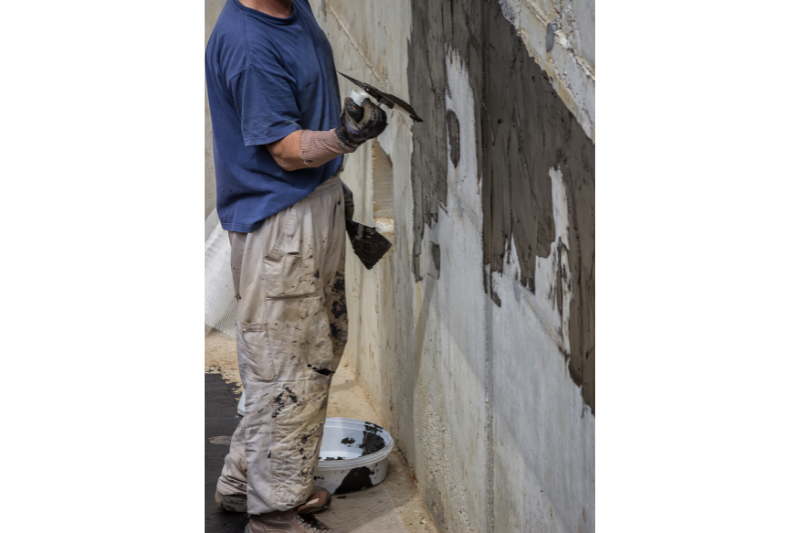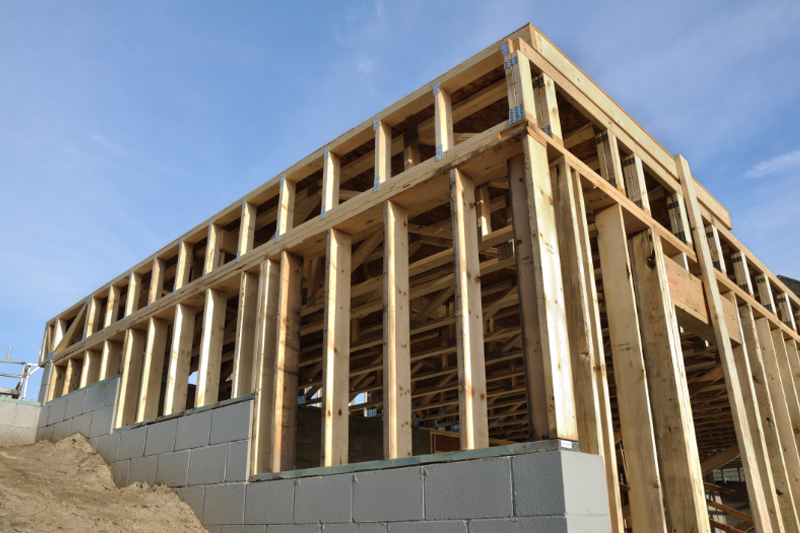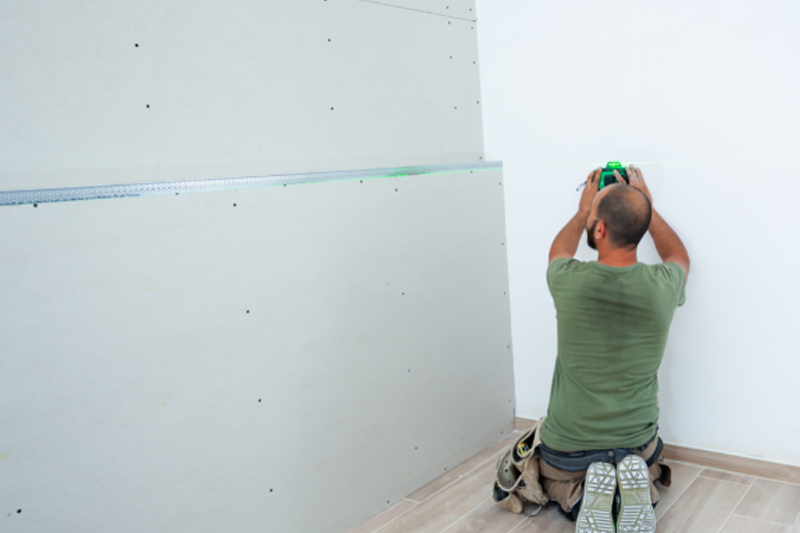Framing basement walls can be a tricky endeavor. There are a number of different situations and obstacles that complicate the framing. As a result, stick building and improvisation are the key phrases when undertaking basement wall framing.
Perimeter Wall Framing
First, if you are planning to have a warm and comfortable basement, perimeter basement walls should be framed using 2”x4” construction, just like the interior walls. By using 2”x4” studs on the perimeter basement walls insulation can be installed to ensure a warmer room. If warmth is not a priority, and the installation of drywall is still required on the perimeter basement walls, then furring strips can be attached to the perimeter walls instead. Furring strips usually consist of 2”x2”s that are glued and nailed to the concrete basement walls.

Internal Wall Framing
The internal walls can be built on the ground and then simply raised in place, however, due to inevitable variations in basement floor heights the walls should be built slightly shorter and then shimmed into place. If this is not done, you may have some difficulty raising the wall as it may get wedged between the floor of the basement and the ceiling/floor joists. Also, if the home is built on clay soil the basement floor may move slightly up and down based on the water content in the ground. If the home is built on clay soil, then you should use L-Shaped steel framing clips to attach to the walls and the first-floor floor joists. These clips will enable the walls to breathe (move up and down), but give the support necessary to ensure the wall remains vertical.
When building basement walls there are typically many obstructions (pipes, ductwork) that you need to build around. Thus, it is sometimes easier to stick build walls around these types of obstructions.
Stick Build Framing
To stick build walls, first nail a top plate perpendicular to the floor joists. Next, secure a bottom plate to the concrete floor using concrete nails and an adhesive such as Liquid Nails. Make sure you use pressure treated lumber on the bottom plate as it is in contact with the concrete and will wick moisture over time. The top and bottom plates should be parallel to each other. Use a plumb line to ensure they are parallel. Finally install 2’x4” studs every 16” along the plates. Make sure you measure for each stud prior to cutting, as the floor to ceiling distances will vary.
Boxing in Ductwork
Soffits may need to be built if ductwork needs to be boxed in or if planning to install interior lighting. Soffits are not structural and thus can be framed using 2”x2”s. Similar to any wall framing, use two parallel 2”x2” plates and connect them using vertical stud members. Secure a 2”x2” top plate to the floor joists and then stick the nail in a 2”x2” stud on both ends of the top plate. Next, nail the bottom plate to the two studs to create the basic wall. Finally, install on 16” centers, 2”x2” studs along the entire length of the plates. Pending the situation, you may need to build the same framing structure on the other side of the ductwork. Once you have completed the second soffit wall simply install 2” x 2” cross-member stud pieces (lookouts) between the two soffit wall sections. You will want to make sure you use a chalk line and a level during this task to ensure the soffit walls remain straight. Again, as the soffit is being stuck built, measure every stud prior to cutting.
Framing the Ceiling
If drywall is to be installed on the ceiling then you may need to add effectively a horizontal wall. Basically, the same process is done as with building soffits, however, 2”x4”s are used for providing clearance for pipes hanging below the floor joists. If there are no pipes or wiring hanging below the floor joists, then 1’x3” strapping may be able to be used. Simply nail them perpendicular to the floor joists on 16” centers.
Want to discuss more? Contact our remodeling consultant now.


